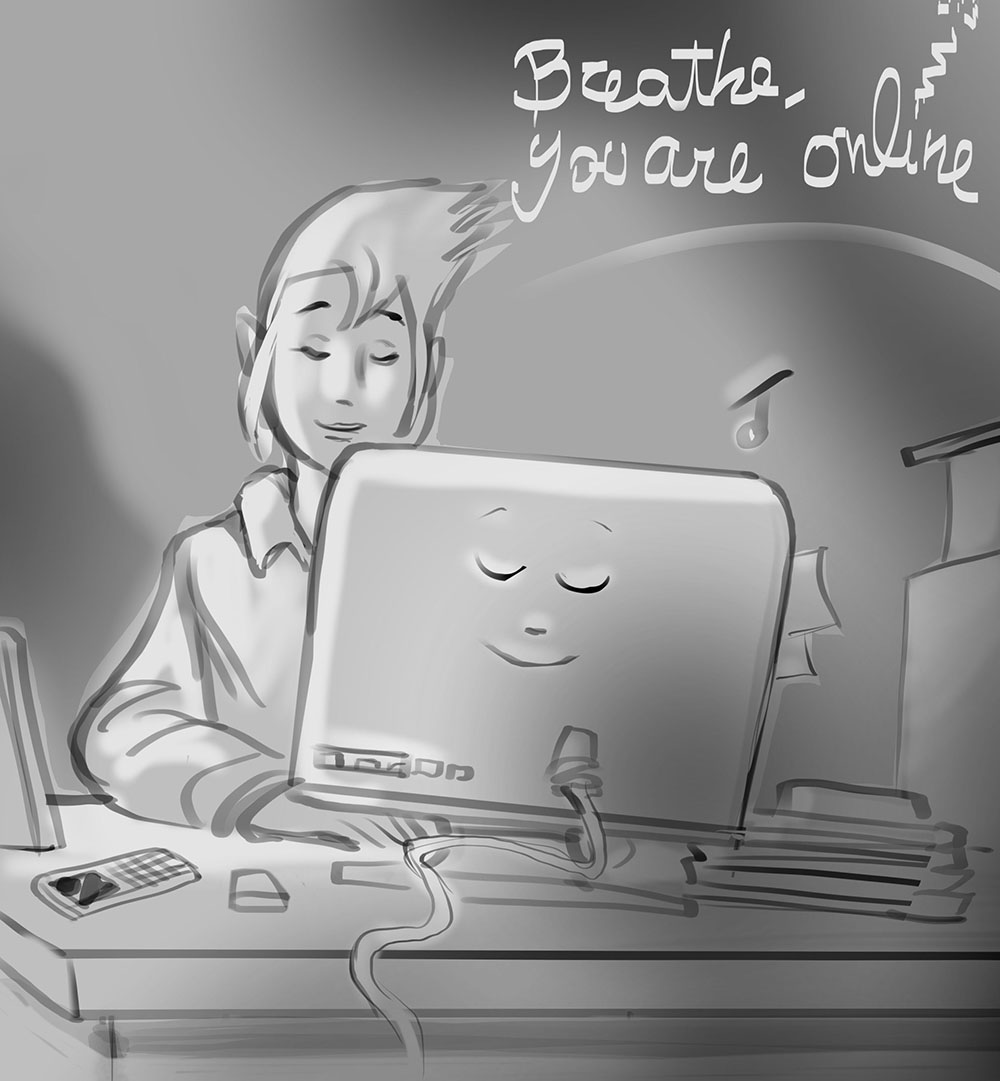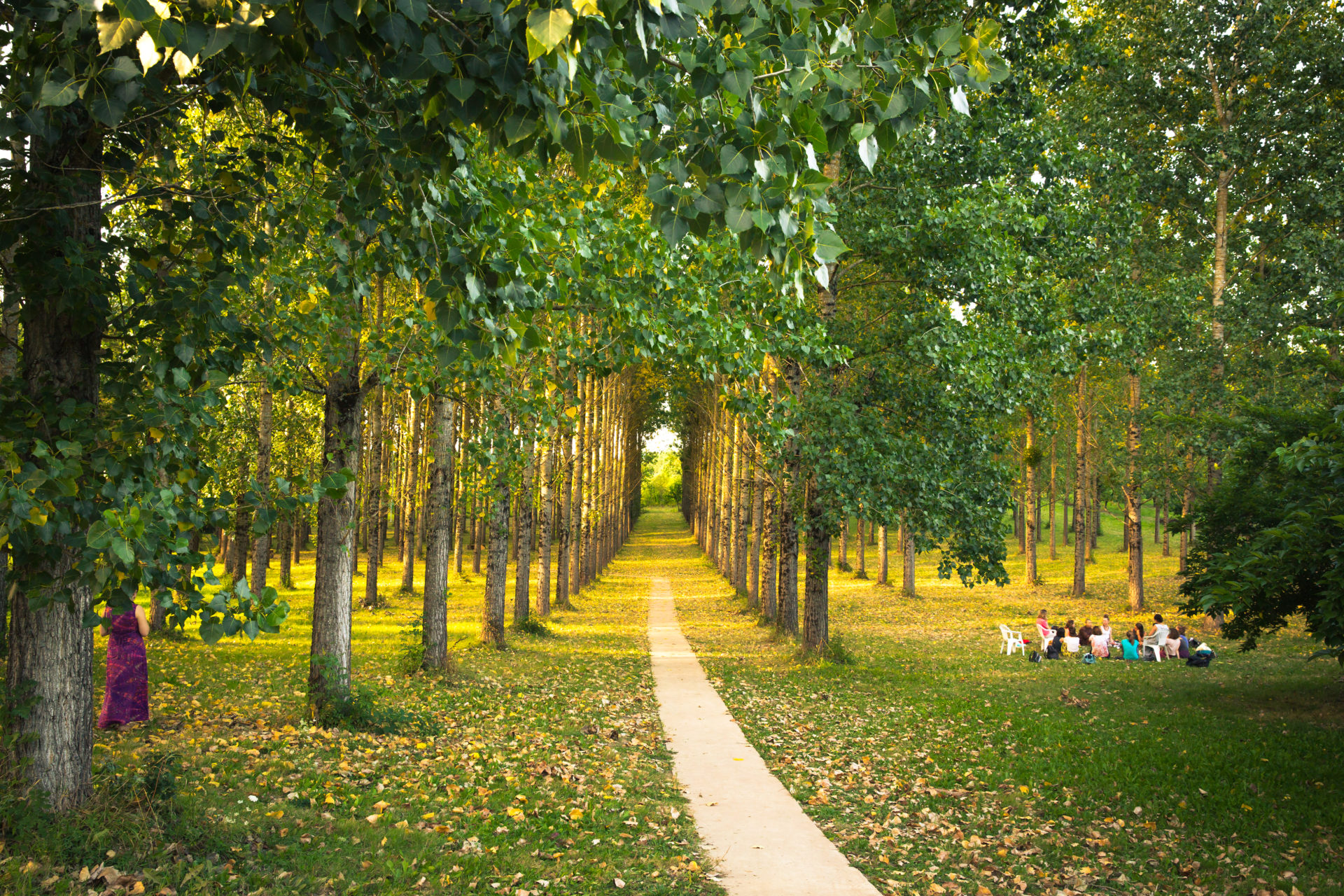By Michaël Vassen

I decided on a career in international finance. This choice came not from my heart but because I thought it was time to put aside my dreams for a fairer and more equal world, and do what I thought society and my family expected of me. However, I continued to yearn for something else.
In my early thirties, I read one or two books about Buddhism before I found Thay’s book,
By Michaël Vassen

I decided on a career in international finance. This choice came not from my heart but because I thought it was time to put aside my dreams for a fairer and more equal world, and do what I thought society and my family expected of me. However, I continued to yearn for something else.
In my early thirties, I read one or two books about Buddhism before I found Thay’s book, Peace is Every Step. I was so touched that I went to Plum Village for the first time in 2008. It was a health and meditation retreat, where I met very few business people. The peaceful energy of Plum Village, the content, depth and simplicity of the teachings touched me deeply. But what affected me most was that it was the first time I felt I could just be myself, feel at ease when I chose to be silent, and be accepted and embraced.
When I returned home, I thought of many ways to keep my practice alive in my daily life. There was no Sangha where I lived, and I didn’t feel, with so little practice experience, that I had the skills to start a Sangha. Instead, I watered the seeds of my practice by reading a lot, listening to Dharma talks, and meditating alone. During that period, I often took Thay’s books with me to work. I put them on my desk as a mindfulness bell to remind me to come back to my breath and enjoy the present moment. During lunch breaks, I often went for walks, practicing walking meditation and enjoying the trees in the neighborhood. I also decided not to eat any more meat and to stop drinking alcohol. My colleagues soon realized that something about me had changed, but I wasn’t able to openly speak to them about my practice. I was afraid of what people would think of me and how it might affect my career aspirations. I rarely stood up for or even shared my values. Now I see that this came from a deep fear of rejection. So when I went on retreats, I told my colleagues that I was visiting friends in France or Germany.
This went on for a few years while my commitment to the practice became stronger. At the same time, I felt more and more that this job was no longer in line with my search for right livelihood. What to do? Thay has given the example of a scientist working in the nuclear industry, encouraging the scientist to stay in the job and to continue to practice in order to help transform his work environment. I didn’t have the strength to do this, especially because I didn’t have the support of a Sangha.
One day, I realized that having a successful career was really about gaining recognition from my father. These growing realizations about myself led to quitting my job and planning to go to the Winter Retreat at Plum Village. When leaving, I told my colleagues about the retreat and finally spoke openly about my practice. People expressed both surprise and encouragement, some saying that if they could, they would follow my example and also leave. Their comments helped me realize that my practice had contributed a little to transforming the company environment, mainly through my way of communicating with people and through practicing smiling and breathing.
I now work in an education program, and I feel that my job contributes to my happiness and to the happiness of the larger community. My new work environment is a Sangha, which contains several elements that contribute to mindfulness: the joy of the sound of a bell and of silence, and the willingness of all team members to share their joys and difficulties in the practice and their aspiration of transforming our work environment.
Thanks to these elements, and to the freedom and trust that go along with them, I am at ease with my job for the first time. I no longer feel a separation between my professional life and the rest of my life; everything I do is in line with my aspirations. Doing my job has less and less to do with getting things done–even if I can still recognize this habit energy in me–but with being available to what each moment of life has to offer regardless of what is on my agenda. And somewhat surprising to me, this change often contributes to making my work successful.
Since September 2016, my team has offered mindfulness lunches to our colleagues, to students on campus, and to people in the surrounding area. We meet as an open group every three weeks for an hour during lunchtime. We meditate silently, practice a body scan and the Ten Mindful Movements, and then share about our experiences with mindfulness practice. This experience watered the seed of Sangha-building in me. Now I can see that Sangha-building is not about having the project of building a group, but is more about stopping, sitting and breathing together, and being present. This is when Sangha manifests and a deep, heartfelt connection with fellow practitioners becomes possible.
Looking at my past and present jobs, I feel a lot of gratitude for my upbringing and the difficult relationship with work it brought me. I was raised on a farm, where work felt like an obligation because it was about getting things done. I perceived work mainly about the result and the quality of the result, and not about the process and its learning potential. Also, I had the impression that working was overrated, and as a child or teenager, I often didn’t meet these standards and got the “lazy” etiquette. This situation made me suffer and brought along a difficult relationship to work, where I was unable to water the seeds of joy while working. It would have been different if, at that time, my family had known Thay’s words “Don’t do so much, have a sit.”
However, thanks to these challenges, I encountered Thay and the practice, which allowed me to transform. Now I experience work as a path and as a playground where I can experiment with my practice. The Sangha is the container that holds my practice and me; it makes this path possible. A path that is about finding the courage to become who I already am and living my life fully. It’s about recognizing my fears and vowing to water the seed of love and understanding. Again and again.

Michaël Vassen, True Sky of Gratitude, is a mediator and MBSR teacher, and practices with the Sangha Graines de Lotus (Lotus Seeds) in Belgium. He also joins the Earth Holder Sangha whenever possible and is involved with the Work’Inspir Sangha.

